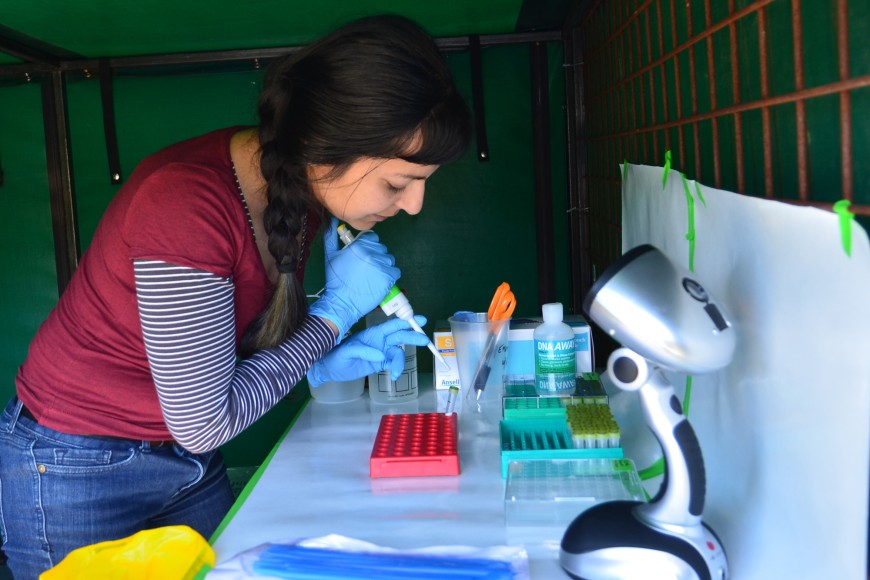A consortium of international and Manaaki Whenua researchers including Dr Manpreet Dhami and lead author Dr Angela McGaughran (University of Waikato), as well as Drs Amy Vaughan, Elahe Parvizi and Claudia Lange say human activities are making biological invasions and the spread of species due to climate change faster worldwide. However, scientists still don’t know much about how changes in species’ genomes help them invade new areas.

Manpreet Dhami at work in the mobile lab
While most studies have looked at how physical traits are linked to the ability to invade, new genomic approaches are revealing that genetic differences are also key to invasion success.
Manpreet says that increasingly there is a shift towards using genomic insights to take a more proactive rather than reactive approach to dealing with invasions. This strategy involves more research into why some invasions succeed and others fail, and using this knowledge to develop methods that could slow down invasions, lessen their impact, or even help eradicate harmful invasive species.
In a separate paper authored by Drs Manpreet Dhami, Eva Biggs, Ronny Groenteman, Simon Fowler, Claudia Lange and Quentin Paynter and a consortium of international collaborators, researchers highlight the different ways microbes can spread among insects, but it is uncertain as to how these microbes change. Insects that live in the same area naturally swap microbes, but now, with more non-native insects being introduced into new places, there’s a chance for them to pass on new microbial partners to the local insects.
Scientists are increasingly realising just how important these microbial communities are for insects to survive, and adapt to new habitats.
“This could lead to insects that eat plants being able to attack new types of plants and cause more damage, or it could help insects deal better with things like climate change, escape from predators, or resist diseases,” says Claudia.
